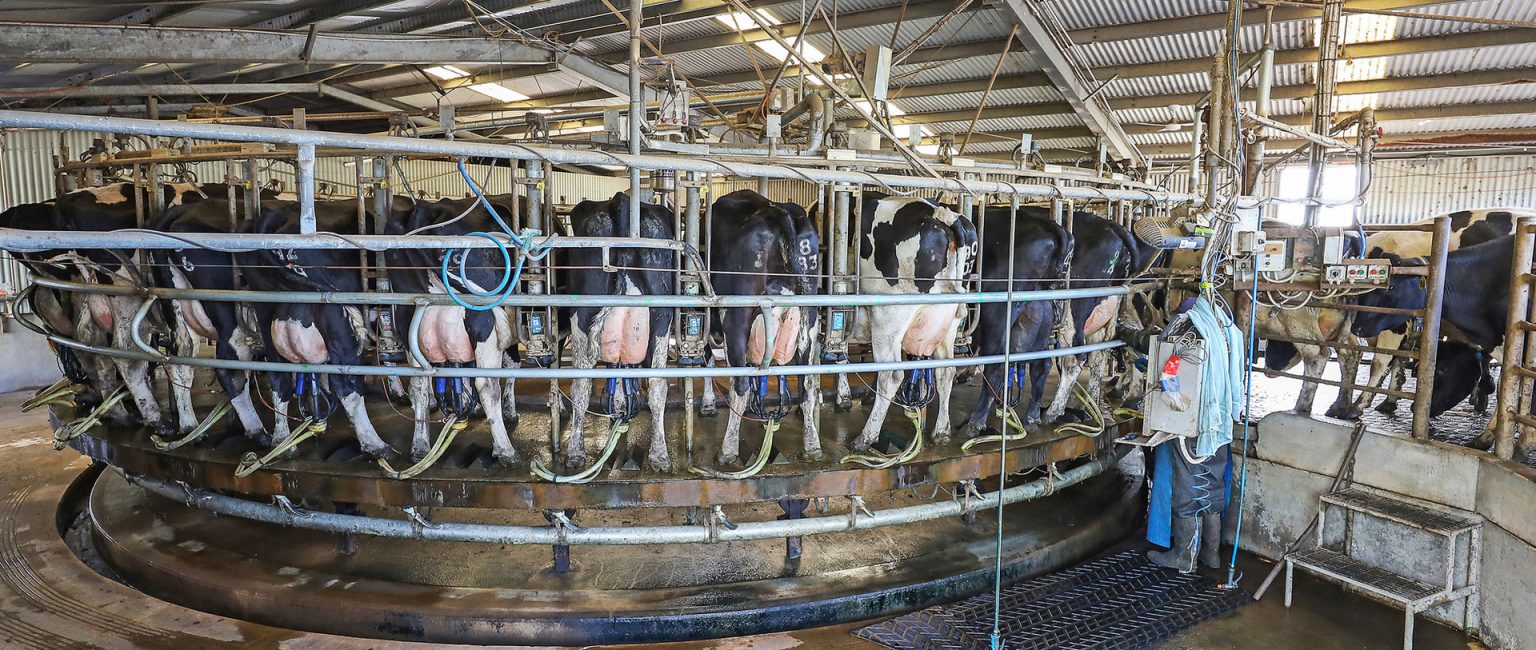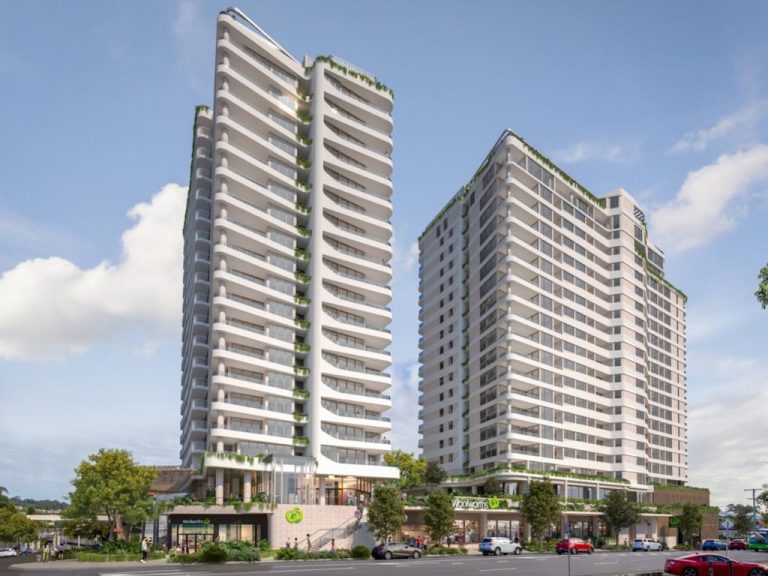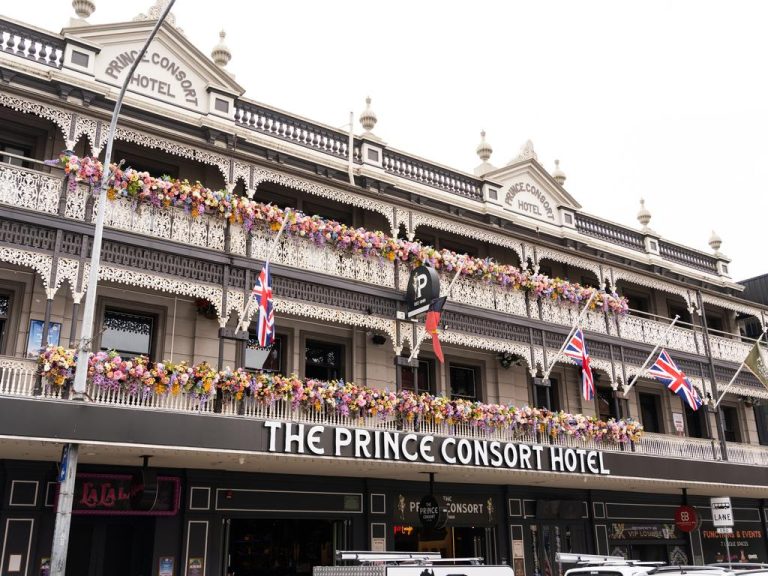Prized dairy farm for sale in ‘challenging’ time for producers

An award-winning dairy farm in Victoria’s prized Warrnambool region is on the market amid challenging times for dairy farms that are driving record milk prices.
‘Kangertong’ at 1626 Hopkins Highway is just outside the township of Purnim and is 16km from the coastal town of Warrnambool on the Great Ocean Road.
Its lush pastures spread across more than 260 hectares, which have been tended by four generations of the Woolley family.
Lisa Dwyer owns and operates the property with her husband Eddie. She is the great granddaughter of James Woolley, who owned the property from 1919.
As well as managing the farm, Ms Dwyer also fulfills several non-executive director and advisory roles and she’s now moving away from dairy farming to explore other interests.

Investors have the opportunity to purchase Kangertong either in one line or as two separate properties. The entire cattle herd, plant and equipment is included in the sale. Picture: realestate.com.au/buy
The listing describes Kangertong as “an intensively developed and technologically advanced operation” that produces more than 3,700,000 litres of milk and 270,000kg of milk solids annually.
The farm consists of a 40-bail rotary, a 420-cow yard and a newly installed flood wash system, good support infrastructure plus digital cow monitoring linked to milk production software.
There is also a four-bedroom residence and a renovated three-bedroom manager’s residence.
Buyers can purchase the properties separately or the farm as a complete entity including the entire cattle herd and equipment.
‘Not a broad market’
Matt Childs, director of agribusiness at CBRE, is managing an expressions of interest campaign with a guide price of over $9 million.
Almost a month into the campaign, he’s “confident” of a sale.
“Dairy farms are very specific, it’s not a broad market, but it’s such a good place in such a reliable area.”
Mr Childs said while the farm is too small to attract institutional investors, it has piqued the interest of corporate groups, as well as private investors from local and interstate.
“It’s the perfect size for operators in the industry wanting to expand and creates diversity in climate if they were to come from out of the area.”
Prized dairy operation
Victoria is Australia’s largest dairy producing and exporting state, accounting for 67% of the country’s milk production.
And the Great South Coast is one of Australia’s most productive regions, producing $2.3 billion in agricultural output annually.
On Kangertong, 98% of the land is classed as high quality arable and irrigatable, which allows it to grow 80% of its animal fodder on the farm.
“That’s why this place is quite appealing to a lot of people. It’s just so reliable in terms of soil types and reliability of rainfall,” Mr Childs said.
He said the property should cope fine with another La Niña season.

The region scores 81% on CBRE’s Annual Rainfall Reliability Index, compared to the Australian benchmark of 55%. Picture: realestate.com.au/buy
JLL’s senior director of agribusiness Chris Lawlor said the market for dairy farms has always been area-dependent.
“Appetite is still higher for the more reliable coastal regions of Western Victoria, Gippsland and Tasmania, which are less prone to both flood and drought risk,” he said.
Kangertong has certainly proved it’s the cream of the crop in terms of dairy quality.
Ms Dwyer is a leading participant in the Dairy Farm Monitor Project, run by Dairy Australia and Agriculture Victoria, which runs a comparative analysis of 73 dairy farms across Victoria.
The farm’s dairy herd received the Gold Award at the Australian Milk Quality Awards in 2016, 2017 and 2020.
‘Challenging’ times for dairy producers
Dairy farmers are receiving record farmgate milk prices (the price they receive from processors), with the federal Department of Agriculture, Fisheries and Forestry (DAFF) advising the price reached a high of 72.5 cents per litre during the September quarter.
This is being driven by ongoing challenges in the industry such as unfavourable wet conditions across the country, ongoing labour shortages, high production costs and farm exits that have all intensified competition between processors.
While global dairy prices are expected to remain at high levels for some time, the DAFF advises they will fall slightly due to weaker demand from China.
PropTrack economist Anne Flaherty described current conditions for dairy producers as “challenging”.
“Production is down year-on-year due to impacts from weather, as well as rising input and labour costs,” she said.

Kangertong is not a remote operation, located only 16km from the coastal town of Warrnambool. Picture: realestate.com.au/buy
Australia’s milk volumes ended the 2021/22 season down around 3.5%, according to Dairy Australia, with production not expected to improve any time soon.
JLL’s Mr Lawlor said while the market for dairy farms “isn’t quite as hot as earlier in the year with record low interest rates”, the record milk prices were enough to attract buyers.
“Any properties coming to the market are attracting good interest, some smaller blocks merging into neighbours and some still being converted to beef. Family, corporate and institutional investors are all active,” he said.
“As has always been the case, the farms with the updated infrastructure and newer automated rotary dairies are commanding a premium.”
The expressions of interest campaign closes on November 3.







